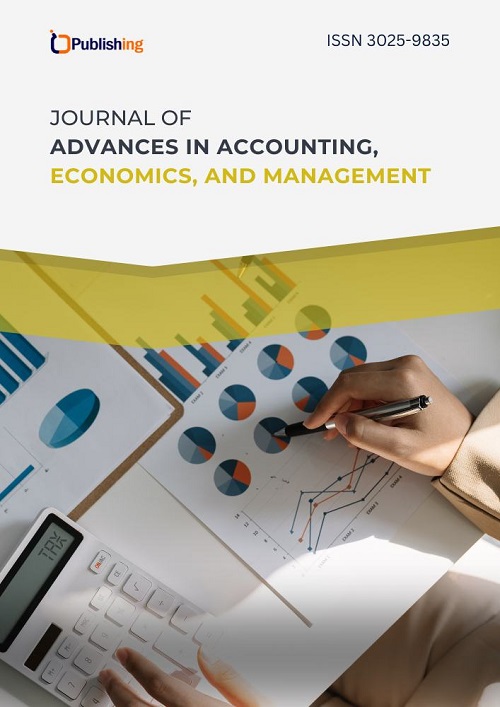The Influence of Promotion and Physical Evidence on Purchasing Decisions at Wisma Sukapura Hotplate, Bandung Regency
DOI:
https://doi.org/10.47134/aaem.v2i1.457Keywords:
Promotion, Physical Evidence, Purchasing DecisionsAbstract
The basic human need for food is one of the factors that can support the growth of the culinary industry. Food presentation using a hotplate has become a trend that is very popular with the public in recent years. One of the hotplate business actors in Bandung Regency is Wisma Sukapura Hotplate, commonly known as WS Hotplate, which has a menu of chicken and beef steak dishes at affordable prices. WS Hotplate is in the campus area, especially Telkom University, so there is a decrease in income during the student holiday season. This study aims to determine in more detail the effect of promotion and physical evidence on purchasing decisions simultaneously and partially. This research uses quantitative methods and a series of tests such as the classical assumption test, which includes normality, multicollinearity, and homoscedasticity tests; multiple linear regression analysis tests; hypothesis testing, which provides for partial (t) and simultaneous (f) tests; and the coefficient of determination test. The non-probability sampling technique used is purposive sampling. The population of people domiciled in Bandung Regency who have purchased at WS Hotplate is unknown, with a sample of 100 respondents. Data testing in research using statistics, namely SPSS, shows that the results of this study are promotional variables and physical evidence that have a significant influence both partially and simultaneously on purchasing decisions at Wisma Sukapura Hotplate, Bandung Regency.
References
Ang, J. Y. (2023). Risk-taking in consumers’ online purchases of health supplements and natural products: a grounded theory approach. Journal of Pharmaceutical Policy and Practice, 16(1). https://doi.org/10.1186/s40545-023-00645-x
Anggela, N. L. (2024). Kemendag Ramal Transaksi E-Commerce di RI Tembus Rp533 Triliun. Kementerian Perdagangan RI.
Asiati, D. I. (2018). Karakteristik Pengguna Media Sosial. Mbia, 17(3), 25–36.
Ghadge, A. (2022). Link between Industry 4.0 and green supply chain management: Evidence from the automotive industry. Computers and Industrial Engineering, 169. https://doi.org/10.1016/j.cie.2022.108303
Hall, M. G. (2022). The impact of pictorial health warnings on purchases of sugary drinks for children: A randomized controlled trial. PLoS Medicine, 19(2). https://doi.org/10.1371/journal.pmed.1003885
Harianto, M. (2024). Kemenperin: Industri makanan-minuman penopang ekonomi Indonesia. Antara News.
Indrawati. (2015). Metode Penelitian Manajemen dan Bisnis : Konvergensi Teknologi Komunikasi dan Informasi. Bandung: PT Refika Aditama. Bandung: Aditama.
Kotler, P., & Keller, K. L. (2016). Manajemen Pemasaran (12th Jilid). PT. Indeks.
Lindstrom, K. N. (2022). Nudges and Choice Architecture to Promote Healthy Food Purchases in Adults: A Systematized Review. Psychology of Addictive Behaviors, 37(1), 87–103. https://doi.org/10.1037/adb0000892
Malhotra, K., N. (2020). Marketing Research: An Applied Orientation Global Edition, 7/E. Pearson.
Naztia Putri, E. S. (2023). Industri Kuliner Membantu Pertumbuhan Ekonomi. Kompasiana.
Nduka, I. (2023). The impact of COVID-19 on the changes in health behaviours among Black, Asian and Minority Ethnic (BAME) communities in the United Kingdom (UK): a scoping review. BMC Public Health, 23(1). https://doi.org/10.1186/s12889-023-15978-0
Nengsih, C. (2022). ANALISIS INOVASI PENJUALAN USAHA RUMAH MAKAN DALAM PEMANFAATAN GO-FOOD PERSPEKTIF EKONOMI ISLAM (Studi Pada Usaha Rumah Makan Ayam Geprek King Di Kecamatan Sukarame). Journal of Economic Perspectives, 2(1), 1–4.
Oraee, A. (2024). Overcoming Premature Smartphone Obsolescence amongst Young Adults. Cleaner and Responsible Consumption, 12. https://doi.org/10.1016/j.clrc.2024.100174
Ploadaksorn, P. (2023). DIGITAL MARKETING FOR PROMOTING YOGA TOURISM ON KHO PHANGAN, THAILAND. Geojournal of Tourism and Geosites, 53(4), 1400–1410. https://doi.org/10.30892/gtg.50421-1139
Rehn-Groenendijk, J. (2023). A process to foster pathology-related effects of design primes – how orthopedic patients might benefit from design features that influence health behaviour intention. Frontiers in Psychology, 14. https://doi.org/10.3389/fpsyg.2023.1211563
Sugiyono. (2022). Metode penelitian kuantitatif. Alfabeta.
Yousefi, N. (2023). Factors Influencing the Types of Merchandise Purchased Online: Evidence From the 2018 California Survey of Emerging Transportation Trends. Transportation Research Interdisciplinary Perspectives, 17. https://doi.org/10.1016/j.trip.2022.100734
Zabeen, S. (2023). Family involvement to support cardiovascular self-management care for people with severe mental illness: a systematic review. Journal of Mental Health, 32(1), 290–306. https://doi.org/10.1080/09638237.2020.1818194
Zerguine, H. (2022). Factors impacting workplace investment in sit-stand workstations from the perspective of purchasing decision-makers. Applied Ergonomics, 98. https://doi.org/10.1016/j.apergo.2021.103558
Downloads
Published
How to Cite
Issue
Section
License
Copyright (c) 2024 Alya Rachmatya Puteri, Nuslih Jamiat

This work is licensed under a Creative Commons Attribution 4.0 International License.








